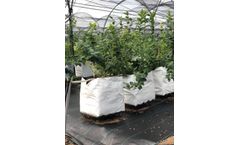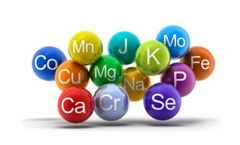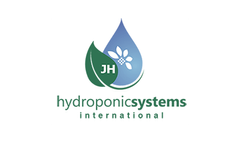Nutrient Solution Articles & Analysis
20 articles found
One of the most effective and natural solutions for water disinfection is ozone (O3), a powerful oxidizing agent used to sanitize nutrient solutions without leaving chemical residues. ...
Most plants prefer a slightly acidic pH, so you may need to make adjustments to achieve the ideal range. Nutrient Solution and pH Nutrient solutions come with their own pH levels. When these solutions are mixed with water, they can alter the overall pH of the nutrient mix. ...
In recent years, the demand for berries, and more specifically blueberries, has increased. This has led to an increase in surface area and cultivation techniques. Soil is no longer a problem thanks to the existence of optimal substrates for growing blueberries. Of all the berries, blueberries require the most consideration for greenhouse cultivation. We are going to see some of them, as well as ...
Cool season root and soil fertilizing is the best way to maintain year-round nutrient levels for deciduous trees, plants, and shrubs. In addition, cool season fertilizing prepares plants to grow with gusto as soon as warmer Spring temperatures return. Biofeed Solutions, Inc. has prepared this information to better explain. We will cover dormant root behavior, ...
It also facilitates that the collection of drains at the end of the line is done more efficiently, allowing a better reuse of the nutrient solution from the drainage. Hydroponic Systems Spacer Premium An effective way to avoid Crazy Roots in greenhouse tomato crops is to incorporate a Premium Hydroponic Systems Spacer into our crops. ...
In short, the longer a plant needs to be under lights in nutrient solution the more costly a crop becomes to produce. Lowering the profit of a given crop can often break a hydroponic business. ...
It also facilitates that the collection of drains at the end of the line is done more efficiently, allowing a better reuse of the nutrient solution from the drainage. Hydroponic Systems Spacer Premium An effective way to avoid Crazy Roots in greenhouse tomato crops is to incorporate a Premium Hydroponic Systems Spacer into our ...
Aquaponics is being defined as a recirculating hydroponic plant production system in which plants are grown in nutrients originating from aquatic animal wastewater. Aeroponics is defined as a variation of hydroponic plant production in which plant roots are suspended in air and misted with nutrient solution. ...
Water Stable Fish Feed Pellet Pellets that break down quickly in water will lose nutrients. Some farmers hydrate feed in water and nutrient solution prior to feeding and require rapid and excellent water stability for handling and feeding purposes. Pellets that breakdown quickly in the stomach of fish loses nutrients (during ...
Barley (Hordeum vulgare L.) root elongation toxicity tests were performed in resin buffered nutrient solutions to control metal speciation. Treatments included single metal concentrations and binary, ternary and quaternary mixtures. ...
To elucidate the physiological and morphological responses generated by vanadium (V) in plants, hydroponic culture experiments were performed with swamp morning glory (Ipomoea aquatica Forsk) exposed to 0 to 2.50 mg L−1 pentavalent V [V(V)] in Hoagland nutrient solutions. The concentration of chlorophyll a, chlorophyll b, and carotene peaked at a V(V) ...
Treated plants produced equal or greater harvestable weights in some cases with up to 40 % less nutrient solution and this could represent a significant saving in the production costs of hydroponically grown crops. ...
The Amnite A-100 was added to the nutrients reservoirs in the greenhouse run-to-waste trickle system. The application of product being made by the daily addition of 2 litres of solution from a ‘breeding tank’ to each new tank of nutrient mix. ...
There are considerable compensations in the savings of water and nutrients as the dumping of solutions are less frequent. The high powered ultra-violet lamps have also been done away with resulting in large savings in ...
Plants were cultured in a double distillated water with modified Hoagland’s nutrient solution at pH 6.8 supplemented with 0, 0.75, 1.50, 2.50, and 4 mg Cr/L as potassium dichromate (K2Cr2O7) and 0, 5, 10, 15, and 20 mg Hg/L as mercuric chloride (HgCl2). ...
Not only is this very difficult to do, evaporation would defeat the purpose of measuring nutrients in a solution. Therefore, companies have developed TDS meters that determine the nutrient content and display that amount on a digital screen for ease-of-use. ...
Because plant roots remove P from soil solution, it follows that plant uptake can reduce dissolved P losses. We evaluated P uptake of smooth bromegrass (Bromus inermis Leyss.), reed canarygrass (Phalaris arundinacea L.), and switchgrass (Panicum virgatum L.) grown in a flowing nutrient solution culture system with P concentrations of 1 or 100 ...
Because plant roots remove P from soil solution, it follows that plant uptake can reduce dissolved P losses. We evaluated P uptake of smooth bromegrass (Bromus inermis Leyss.), reed canarygrass (Phalaris arundinacea L.), and switchgrass (Panicum virgatum L.) grown in a flowing nutrient solution culture system with P concentrations of 1 or 100 ...
Landscapes which are tectonically active are rapidly denudated and continually produce nutrient solutes from fresh bedrock. The chemical weathering yields are related to climate, but also to geologic factors such as uplift rates. Long-term nutrient production and the phase of ecological development are closely related to geological setting. ...
Vegetables were grown in five treatments: nutrient solution (control), secondary effluent diluted 50%, secondary effluent not diluted, tertiary effluent UV irradiated, and UASB effluent. ...














